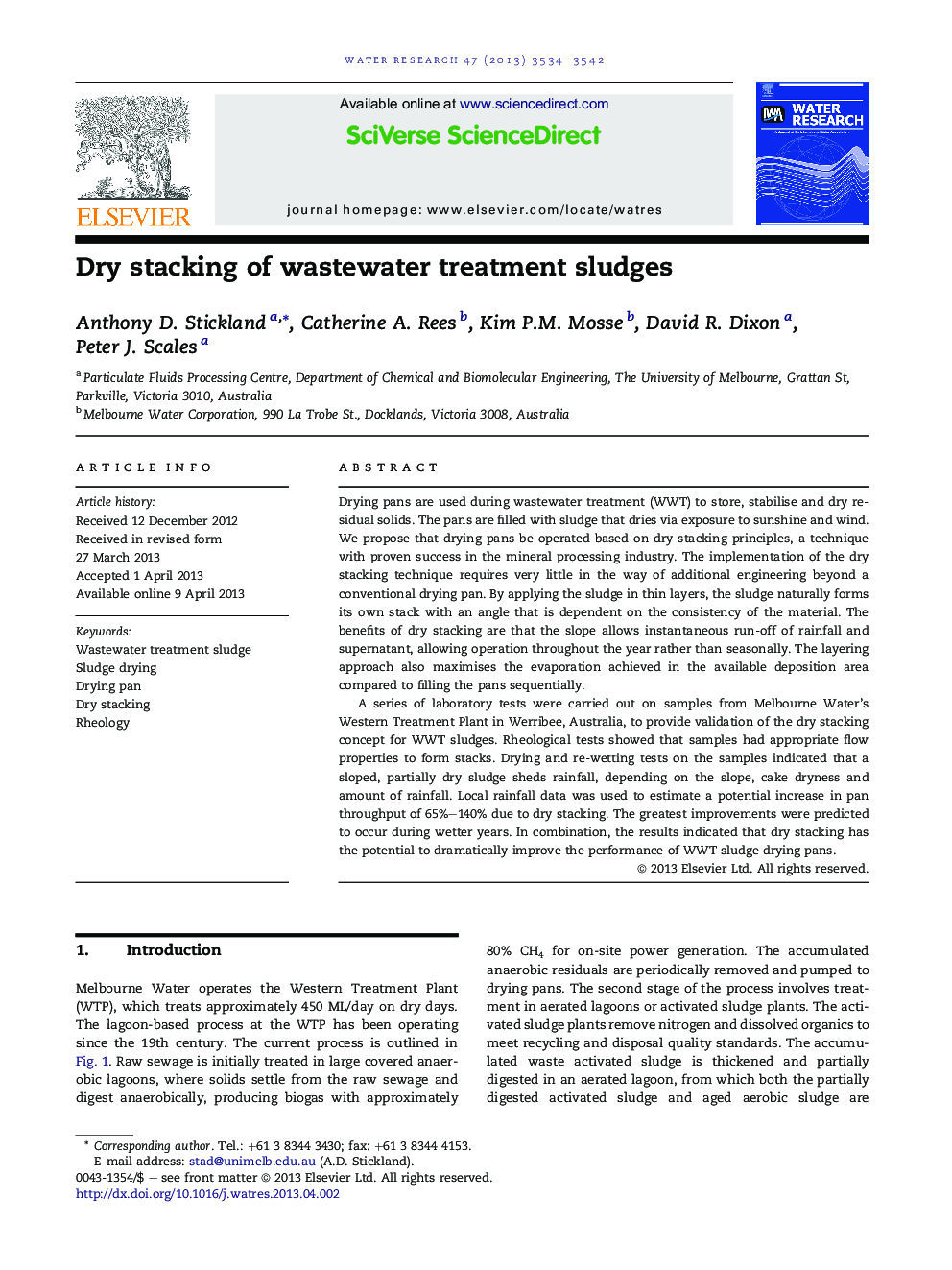| Article ID | Journal | Published Year | Pages | File Type |
|---|---|---|---|---|
| 4481817 | Water Research | 2013 | 9 Pages |
•We examine the feasibility of dry stacking wastewater treatment sludges.•Rheological tests show that sludge has the right consistency to dry stack.•Simulated rainfall tests show that rain will run off sloped sludge beds.•Adsorption tests show that it takes considerable time for dried sludge to re-wet.•Dry stacking methods are estimated to improve evaporation pan throughput by 65%–140%.
Drying pans are used during wastewater treatment (WWT) to store, stabilise and dry residual solids. The pans are filled with sludge that dries via exposure to sunshine and wind. We propose that drying pans be operated based on dry stacking principles, a technique with proven success in the mineral processing industry. The implementation of the dry stacking technique requires very little in the way of additional engineering beyond a conventional drying pan. By applying the sludge in thin layers, the sludge naturally forms its own stack with an angle that is dependent on the consistency of the material. The benefits of dry stacking are that the slope allows instantaneous run-off of rainfall and supernatant, allowing operation throughout the year rather than seasonally. The layering approach also maximises the evaporation achieved in the available deposition area compared to filling the pans sequentially.A series of laboratory tests were carried out on samples from Melbourne Water's Western Treatment Plant in Werribee, Australia, to provide validation of the dry stacking concept for WWT sludges. Rheological tests showed that samples had appropriate flow properties to form stacks. Drying and re-wetting tests on the samples indicated that a sloped, partially dry sludge sheds rainfall, depending on the slope, cake dryness and amount of rainfall. Local rainfall data was used to estimate a potential increase in pan throughput of 65%–140% due to dry stacking. The greatest improvements were predicted to occur during wetter years. In combination, the results indicated that dry stacking has the potential to dramatically improve the performance of WWT sludge drying pans.
Graphical abstractFigure optionsDownload full-size imageDownload high-quality image (150 K)Download as PowerPoint slide
